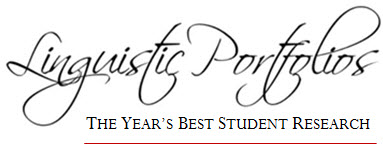
Abstract
Scholarly accounts of infant cry began in earnest in the late 1960s. Subsequent studies have focused on creating a typology of cries in order to correlate them with specific pediatric behaviors or ailments. Instrumental acoustic phonetic tools have often been summoned to validate impressionistic assessments. However, because most pediatric scientists lack adequate preparation in acoustic phonetics, they often failed to measure the features that are acoustically salient. This paper examines past practices and proposes a new methodology that can set infant cry research on a solid acoustic phonetic footing. The findings reported here are preliminary and exploratory because the corpus used in the demonstrations is limited to one “intense” and one “regular” cry. Even so, the findings are cogent because data is extracted from all three relevant dimensions of infant cry: frequency, duration, and intensity. These findings are interpreted psychoacoustically, i.e., based on Just Noticeable Difference (JND) thresholds that have accumulated over nearly 100 years of auditory perception experiments. It follows from these that intensity, as measured in dB, appears to be the most aversive correlate in infant cry. More data is needed before a firm conclusion can be reached.
Recommended Citation
Koffi, Ettien
(2022)
"Is Intensity (Decibel Levels) the Most Aversive Correlate in Infant Cry?: Preliminary and Exploratory Results,"
Linguistic Portfolios: Vol. 11, Article 2.
Available at:
https://repository.stcloudstate.edu/stcloud_ling/vol11/iss1/2


